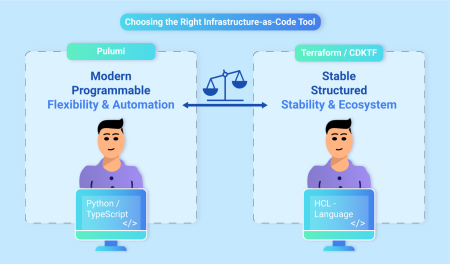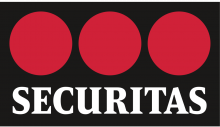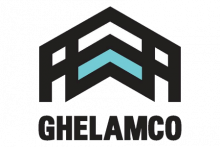Pulumi vs. Terraform/CDKTF: Choosing the Right Infrastructure-as-Code Tool
Infrastructure as Code (IaC) is a fundamental practice in modern cloud computing, enabling teams to define and manage infrastructure through code. When evaluating tools for our co-managed developer platform, we thoroughly compared several technologies to determine the best long-term fit for our core business. One key comparison was between Pulumi and Terraform/CDKTF. Below, we explore their differences, advantages, and drawbacks to help you decide which one suits your needs.

What Are Pulumi, Terraform, and CDKTF?
- Terraform: A widely used IaC tool that employs HashiCorp Configuration Language (HCL) to define infrastructure in a declarative manner.
- Pulumi: A modern alternative that enables developers to use general-purpose programming languages such as TypeScript, Python, Java, and more to define infrastructure.
- CDK for Terraform (CDKTF): A framework introduced by Terraform that allows users to write Terraform configurations using programming languages like TypeScript and Python, similar to Pulumi.
Key Differences
1. Language and Development Approach
One of the biggest differences between Pulumi and Terraform/CDKTF is the approach to writing infrastructure code:
Terraform (HCL-based approach)
- Uses a domain-specific language (HCL), ensuring consistency across projects.
- Easier for teams to onboard new members since Terraform code follows a predictable structure.
- A Terraform expert can apply knowledge universally across different projects and organizations.
Pulumi (General-purpose programming languages)
- Allows developers to use familiar languages like TypeScript, Python, and Java.
- Code can be structured in a highly customized and modular way, making it flexible but potentially complex.
- Fragmentation across different programming languages may make community support and best practices less consistent.
CDKTF (Bringing Terraform and Pulumi concepts together)
- Allows writing Terraform infrastructure using programming languages, similar to Pulumi.
- Maintains Terraform’s provider ecosystem while offering flexibility in defining infrastructure.
- Follows a 1-to-1 mapping with Terraform constructs, which may be intuitive for existing Terraform users but less so for new users.
2. Provider Support and Integration
- Pulumi claims to support all Terraform providers and more. So far, in our evaluation, we have not encountered missing integrations when using Pulumi.
- CDKTF retains Terraform’s vast provider ecosystem, making it a familiar and stable choice for existing Terraform users.
3. Technical Advantages of Pulumi
Pulumi offers some notable technical advantages over Terraform:
- Pulumi Automation API: Unlike Terraform, which requires running terraform apply manually, Pulumi allows managing stacks programmatically through its API. This enables automated infrastructure deployment from within an application without requiring the Pulumi CLI.
- Pulumi AI: A new feature that assists in writing Pulumi code using an AI-powered assistant. While promising, it still needs refinement—generating accurate code for simple cases but struggling with complex scenarios.
- Direct Low-Level AWS API Access: Pulumi supports both high-level and low-level AWS APIs. With the low-level API, new AWS features become available immediately as soon as AWS supports them—without waiting for a Terraform provider update. However, transitioning from low-level to high-level APIs might require code adjustments.
4. Licensing and Pricing Model
- Both Pulumi and Terraform offer comparable pricing models.
- Pulumi users can either:
- Use Pulumi Cloud for backend state management and enterprise features with different pricing tiers.
- Opt for a free model with a local backend, avoiding cloud-based costs.
Market Position and Adoption
Pulumi is gaining market share as a competitor to Terraform, offering a modern developer experience. However, Terraform remains the industry leader, especially among teams that value stability and an established ecosystem. The choice ultimately depends on your team’s expertise and infrastructure strategy.
Conclusion: Which One Should You Choose?
Choose Terraform/CDKTF if:
- Your team is already familiar with HCL-based Terraform.
- You need a mature, stable, and widely adopted tool with a vast provider ecosystem.
- You prefer declarative infrastructure management with a predictable structure.
Choose Pulumi if:
- You want to use general-purpose programming languages for infrastructure.
- You need more flexibility and the ability to create complex, modular infrastructure code.
- You require programmatic stack management with Pulumi’s Automation API.
- Immediate access to new AWS features is critical for your use case.
Ultimately, both tools provide powerful Infrastructure-as-Code capabilities, and the right choice depends on your organization's needs, team expertise, and long-term cloud strategy.


















